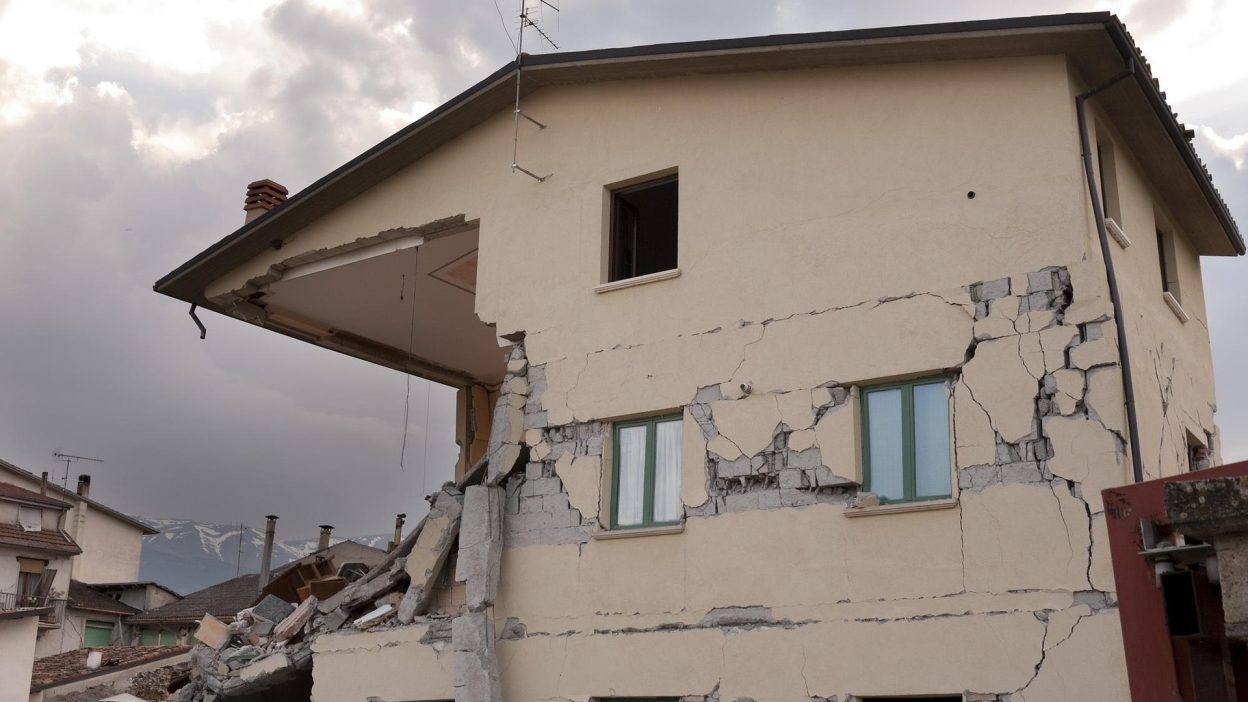The tremors were felt throughout the region
On January 12, 2010, a powerful earthquake struck Haiti, causing widespread devastation and leaving the country grappling with unimaginable destruction. The earthquake registered a magnitude of 7.0, with its epicenter located approximately 25 kilometers southwest of Port-au-Prince, Haiti’s capital. It struck at 4:53 PM local time, lasting just 35 seconds, but its effects would be felt for years to come. The tremors were felt throughout the region, including in neighboring countries such as the Dominican Republic, Cuba, and Jamaica.
Haiti, a nation already struggling with severe poverty, weak infrastructure, and political instability, was ill-equipped to handle the massive disaster. The earthquake collapsed buildings, bridges, and other critical infrastructure, leaving the population vulnerable and severely affected. More than 230,000 people lost their lives, and millions were displaced from their homes. The nation’s already fragile healthcare system was overwhelmed, and the impact on the economy was devastating.
In the immediate aftermath of the earthquake, Haiti was thrust into a humanitarian crisis that called for an extraordinary international response. Nations, aid organizations, and individuals from around the world mobilized to aid, sending rescue teams, medical supplies, and food to help the survivors. Despite these efforts, challenges like logistical difficulties, limited resources, and political complications slowed the pace of recovery.
The earthquake’s aftermath highlighted the vulnerabilities of Haiti and underscored the need for long-term recovery strategies that address not only immediate humanitarian needs but also infrastructure, governance, and disaster preparedness.
1: Impact on Haiti
The impact of the 2010 Haiti earthquake was devastating, affecting nearly every aspect of the nation. With a magnitude of 7.0, it caused widespread destruction across the capital city, Port-au-Prince, and surrounding areas, leading to over 230,000 deaths, 300,000 injuries, and more than 1.5 million people displaced.
Death and Injury
The immediate loss of life was staggering, with the majority of fatalities occurring in Port-au-Prince, where densely populated areas suffered massive building collapses. Hospitals, schools, and homes were destroyed, leaving many injured and without access to medical care. The lack of medical facilities and health infrastructure contributed to the death toll, as many injured individuals were unable to receive treatment.
Destruction of Infrastructure
The earthquake caused severe damage to Haiti’s infrastructure. Buildings in Port-au-Prince and other cities, including government structures, schools, and hospitals, collapsed. Many residential areas, particularly informal settlements with poorly constructed homes, were completely destroyed. The national transportation network, including roads, bridges, and ports, was heavily damaged, making it extremely difficult to deliver aid and support recovery efforts. In some cases, entire neighborhoods were rendered uninhabitable.
Economic Impact
The earthquake led to significant economic losses, particularly in sectors like agriculture, manufacturing, and tourism. The country’s GDP was estimated to have contracted by 5.1% in 2010 due to the damage caused by the earthquake. Thousands of businesses were destroyed or severely damaged, and many industries came to a standstill. As the capital was the economic heart of the nation, its collapse had widespread ramifications for the entire country.
2: Earthquake Details
- Date and Time: The earthquake struck on January 12, 2010, at 4:53 PM local time.
- Magnitude: The earthquake had a magnitude of 7.0 on the Richter scale.
- Epicenter: The epicenter was located approximately 25 kilometers southwest of Port-au-Prince, Haiti’s capital. It was near the town of Leogane.
- Depth: The earthquake occurred at a shallow depth of 13 kilometers (8 miles) below the Earth’s surface, which contributed to the intensity of the shaking.
- Fault Line: The earthquake was caused by movement along the Enriquillo-Plantain Garden Fault, a major strike-slip fault that runs through the region.
- Region Affected: The earthquake primarily affected the western part of Haiti, including the capital, Port-au-Prince, and other surrounding towns like Leogane and Jacmel. Tremors were felt across the island and in neighboring countries, including the Dominican Republic, Cuba, and Jamaica.
- Aftershocks: Multiple aftershocks followed the main earthquake, with several registering over 5.0 in magnitude, further complicating rescue and recovery efforts.
- Seismic Intensity: Due to its shallow depth and proximity to populated areas, the earthquake caused severe shaking in the affected regions, leading to the widespread collapse of buildings and infrastructure.
- Impact on Nearby Cities: The city of Leogane, located near the epicenter, was almost completely destroyed, with widespread structural damage in Port-au-Prince and other surrounding areas.
- Earthquake Characteristics: The earthquake was primarily a strike-slip fault event, meaning the tectonic plates on either side of the fault moved horizontally past one another. This type of fault movement contributed to significant surface rupture and structural damage.
3: Response and Emergency Management
The response to the 2010 Haiti earthquake involved a combination of local, national, and international efforts. In the immediate aftermath, the Haitian government, which was already struggling with limited resources, faced challenges in coordinating the emergency response. The country’s infrastructure, including roads and communication networks, was heavily damaged, making it difficult to reach affected areas and assess the scale of the disaster. The United Nations, alongside international partners, quickly mobilized to aid. Rescue teams, medical supplies, and humanitarian aid were sent to Haiti from countries like the United States, Canada, and France. The United States military played a significant role, sending in troops to assist with relief efforts, secure the airport, and help distribute supplies. Search-and-rescue operations were launched, with teams working to extract survivors from collapsed buildings. However, the lack of clear communication, combined with the destruction of roads and hospitals, slowed down the delivery of aid and medical care. In addition, the sheer scale of the disaster overwhelmed existing facilities, with hospitals and shelters unable to accommodate the large numbers of injured and displaced individuals. The efforts to provide food, clean water, and medical services were impeded by logistical challenges, and in some cases, the lack of a coordinated effort among aid agencies led to delays and confusion. Despite these hurdles, numerous organizations, including the Red Cross and Médecins Sans Frontières (Doctors Without Borders), worked tirelessly to provide emergency care and support to survivors. The initial response was marked by urgency, but also hindered by the scale of the destruction and Haiti’s vulnerability, which made recovery efforts difficult and slow.
4: Humanitarian Crisis
The 2010 Haiti earthquake triggered an immense humanitarian crisis that worsened the already fragile conditions in the country. Over 1.5 million people were displaced by the earthquake, with many forced to live in overcrowded temporary shelters or makeshift camps in the aftermath. These camps lacked proper sanitation, clean water, and adequate food, leading to severe shortages. The healthcare system in Haiti, already under-resourced, was completely overwhelmed by the scale of the disaster. Hospitals were destroyed or damaged, and there was an urgent need for medical care, especially for the injured and the sick. The lack of basic services like sanitation led to widespread disease outbreaks, most notably a cholera epidemic that emerged in the months following the earthquake. Cholera spread rapidly due to the lack of clean water and proper waste disposal, resulting in thousands of deaths. The overall mental health of the population was severely impacted, with many survivors experiencing trauma, grief, and displacement. The disaster further exacerbated Haiti’s existing issues of poverty and underdevelopment, making it difficult to provide for the basic needs of the population. The humanitarian crisis was marked by slow recovery, as the scale of the destruction and the limitations of aid distribution hindered the ability to provide immediate relief to those in need. The situation was made more difficult by the lack of effective coordination between humanitarian organizations and the Haitian government, which lacked the capacity to handle such a large-scale disaster.
5: Long-Term Recovery and Reconstruction
The long-term recovery and reconstruction process following the 2010 Haiti earthquake was complex and slow, hampered by a combination of structural, political, and logistical challenges. In the years following the earthquake, over $13 billion in international aid was pledged, but much of the funding was delayed or mismanaged. This slow flow of resources significantly hindered Haiti’s ability to rebuild its infrastructure, housing, and key facilities. Many temporary shelters evolved into permanent camps, with millions of people still living in substandard conditions years after the disaster. Rebuilding efforts faced significant challenges due to a lack of infrastructure, inadequate construction materials, and the difficulty of coordinating efforts between international donors, aid organizations, and the Haitian government. The country’s political instability further complicated recovery, with corruption and mismanagement hampering the distribution of resources and aid. In the urban areas, including Port-au-Prince, the destruction of homes, businesses, and public buildings left large sections of the population homeless and without work. Rebuilding efforts aimed to restore basic services such as water, electricity, and health facilities, but these efforts were plagued by inefficiencies. There was also a strong emphasis on resilience, with initiatives aimed at improving Haiti’s ability to withstand future disasters. While some infrastructure projects were completed, including the reconstruction of roads and hospitals, long-term progress was slow, and many Haitians continued to live in precarious conditions. Furthermore, unemployment remained high, and the economy struggled to recover. The lack of a cohesive, long-term recovery strategy and the fragmentation of aid efforts meant that Haiti’s recovery from the 2010 earthquake would take much longer than expected, with many of the country’s challenges remaining unresolved years after the disaster.
6: Lessons Learned and Future Preparedness
The 2010 Haiti earthquake highlighted several critical lessons in disaster response and preparedness that continue to influence how the world approaches future emergencies. One of the key lessons learned was the importance of disaster preparedness and early warning systems. Haiti’s lack of an effective emergency management infrastructure left the country vulnerable when the earthquake struck. In the future, countries at risk of similar disasters must invest in early warning systems, which can provide crucial time for evacuation and other safety measures. Another lesson was the need for better coordination among international and local aid organizations. In Haiti, aid distribution was often slow and inefficient due to poor communication and lack of collaboration between various entities. Establishing more effective coordination mechanisms, such as a central disaster management body, could help streamline efforts and ensure faster and more organized relief in future crises. The earthquake also demonstrated the necessity of building resilient infrastructure. Haiti’s infrastructure was already fragile before the earthquake, which contributed significantly to the high level of destruction. Future preparedness should include strengthening buildings and roads to withstand natural disasters, particularly in urban areas. Additionally, the long-term recovery process underscored the importance of sustainable development practices. Haiti’s reliance on international aid for recovery and rebuilding showed the need for greater self-sufficiency in the country’s disaster response. Lastly, the earthquake illustrated the importance of community involvement in both response and recovery efforts. Engaging local communities in disaster preparedness, recovery, and reconstruction helps to ensure that recovery efforts are both culturally appropriate and effective. By addressing these lessons, future disaster preparedness and response can be more efficient, effective, and sustainable.
7: Global Response and Solidarity
The global response to the 2010 Haiti earthquake demonstrated a remarkable outpouring of solidarity, though it also revealed significant challenges in coordinating international aid. In the immediate aftermath of the disaster, governments, humanitarian organizations, and individuals around the world mobilized to provide emergency relief. Countries like the United States, Canada, France, and the Dominican Republic were among the first to send aid, with many offering medical teams, rescue workers, and logistical support. The United Nations quickly established a humanitarian response plan, and international organizations such as the Red Cross, Médecins Sans Frontières (Doctors Without Borders), and World Food Programme began delivering food, water, and medical assistance. Over $13 billion in international aid was pledged, and emergency shipments of supplies arrived within days. However, the scale of the disaster, combined with Haiti’s weak infrastructure and the destruction of the airport and port in Port-au-Prince, posed significant logistical challenges. The U.S. military was deployed to secure the airport, facilitate aid delivery, and assist with relief operations, while search-and-rescue teams from across the globe worked to locate survivors. Despite these efforts, the response was often hampered by poor coordination between international organizations, the Haitian government, and the private sector. In some cases, aid was delayed or misdirected due to inadequate communication and competing priorities among organizations. Additionally, the lack of infrastructure made it difficult to distribute aid effectively, and the immediate needs of the population often overshadowed long-term recovery planning. While the global response showed strong solidarity, it also revealed the necessity for more effective disaster coordination, better logistical planning, and stronger local capacity to manage such large-scale humanitarian crises.
8: Conclusion
The 2010 Haiti earthquake exposed the significant vulnerabilities faced by one of the poorest nations in the Western Hemisphere, both in terms of infrastructure and preparedness for such large-scale disasters. While the global response demonstrated an outpouring of humanitarian support, the recovery process was hindered by challenges like ineffective coordination, inadequate infrastructure, and limited local capacity to manage the disaster’s aftermath. Despite receiving over $13 billion in aid, long-term recovery was slow and uneven, with millions of people still living in temporary shelters years after the disaster. Efforts to rebuild critical infrastructure, such as schools, hospitals, and homes, were plagued by delays and inefficiencies. The earthquake also highlighted the importance of disaster preparedness, the need for stronger resilient infrastructure, and the crucial role of effective coordination between international, national, and local agencies. The environmental impact of the earthquake, along with the challenges in healthcare and sanitation, further underscored the need for a more holistic approach to recovery, one that focuses not only on immediate relief but also on sustainable, long-term development. In conclusion, while the international community’s response provided vital assistance in the short term, the earthquake’s aftermath revealed that building long-term resilience and improving disaster response mechanisms should remain a priority for both Haiti and the global community.
FAQ on the 2010 Haiti Earthquake
Q1: What was the magnitude of the 2010 Haiti earthquake?
A: The earthquake had a magnitude of 7.0 on the Richter scale.
Q2: When did the Haiti earthquake occur?
A: The earthquake occurred on January 12, 2010, at 4:53 PM local time.
Q3: How many people died in the Haiti earthquake?
A: An estimated 230,000 people died as a result of the earthquake, with many others injured and displaced.
Q4: What caused the 2010 Haiti earthquake?
A: The earthquake was caused by movement along the Enriquillo-Plantain Garden Fault, a strike-slip fault running through the region.
Q5: How did the international community respond to the Haiti earthquake?
A: Over $13 billion in aid was pledged, and numerous countries and organizations, including the United States, Canada, France, and the Red Cross, mobilized to provide emergency relief and support for recovery efforts.
References:
1: United Nations Office for the Coordination of Humanitarian Affairs (OCHA) – Haiti Earthquake: Humanitarian Response Overview:
2: U.S. Geological Survey (USGS) – Overview of the 2010 Haiti Earthquake:
3: World Health Organization (WHO) – Earthquakes: Lessons from Haiti Public Health Impact of Earthquakes:
4: Haiti Earthquake Relief Fund – Overview of International Aid and Recovery Efforts:
Yt links:
Haitians still unsafe from 2010 earthquake damage
2010 Haiti Earthquake—10 Years Later (January 2020)
Looking back at the 2010 Haiti earthquake a decade later




